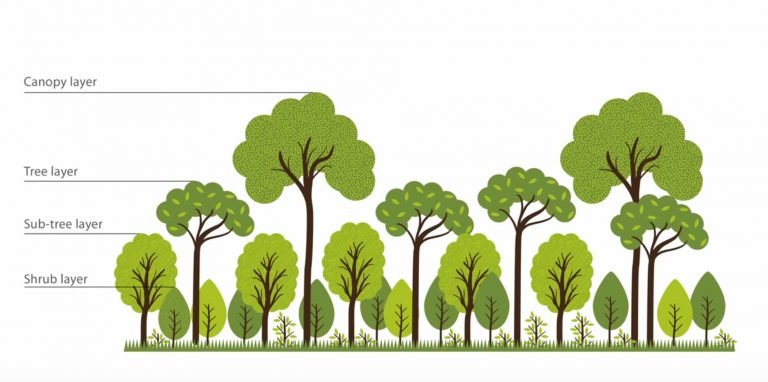Miyawaki Plantation
About
- The Miyawaki plantation technique is a unique method of afforestation that was developed in Japan by a botanist named Akira Miyawaki.
- This method involves planting a diverse range of native tree species in a small area, which then grow into a dense, multilayered forest.
- The aim of this technique is to create a forest that is self-sustaining, with a high level of biodiversity that can help to restore degraded land and combat climate change.
- The Miyawaki technique is known for its ability to grow forests quickly, with trees that are shorter and wider than those found in traditional forests.
Process of Miyawaki
- Site Selection: It is important to choose a suitable area considering factors like sunlight, drainage, and soil quality for Miyawaki Plantation Forests.
- Native Species: In this Method of plantation, diverse native plant species are chosen and it is against Monoculture (the practice of growing a single crop on a given area).
- Soil Preparation: The soil is well drained, weeds or unwanted plants are removed and compost is added.
- Planting : Native species of different heights such as shrub, sub trees, trees , etc are planted to create a multi-layered dense forest. Refer to the image provided below.
- Maintenance : After initial establishment, these forests require minimal maintenance due to their dense structure and self-sustaining nature.

Advantages of the Miyawaki Plantation Technique
- It can help restore biodiversity in degraded areas by providing alternate habitats.
- Miyawaki plantation can help regulate the microclimate of urban regions and counter the effects of urban heat island effect
- Through the Miyawaki method, carbon sequestration is increased, which can help reduce the effects of global warming.
- Additionally, the forests that are created using this method require less maintenance and can grow more quickly than traditional forests.
Disadvantages of the Miyawaki Planting Method
- The technique involves planting a high density of trees of native species, which can result in a lack of genetic diversity making forests more susceptible to diseases, pests, and other environmental stresses.
- Movement of wildlife species is restricted due to less availability of space between the trees.
- The Miyawaki technique requires specific soil conditions to be successful, and may not be effective in areas with poor soil quality or where there is a high risk of erosion.
Subscribe
Login
0 Comments
